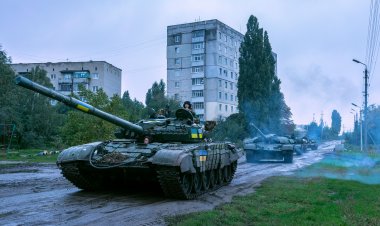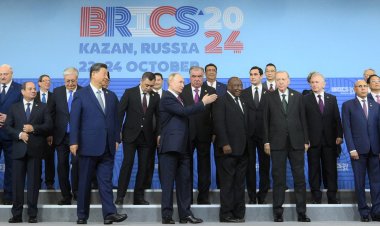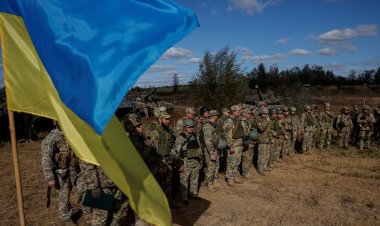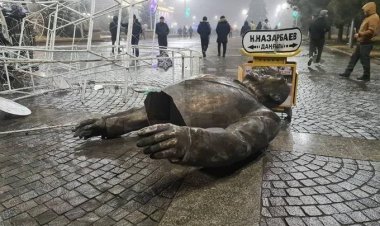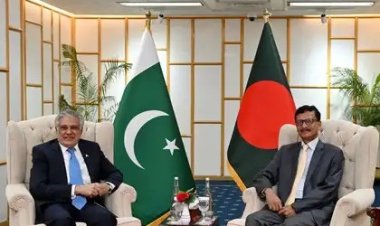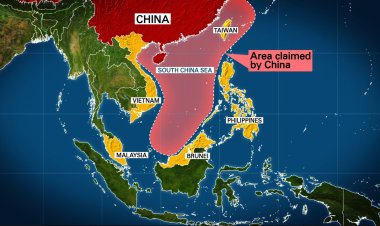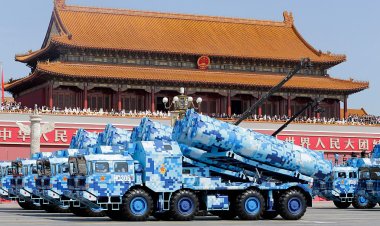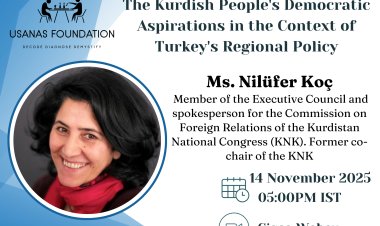The Nagorno-Karabakh Conflict: Peace between Armenia and Azerbaijan?
After decades of armed clashes, thousands of deaths, and millions of displaced populations, Armenia and Azerbaijan are finally moving towards a resolution of the Nagorno-Karabakh conflict and establishing enduring stability in the region.
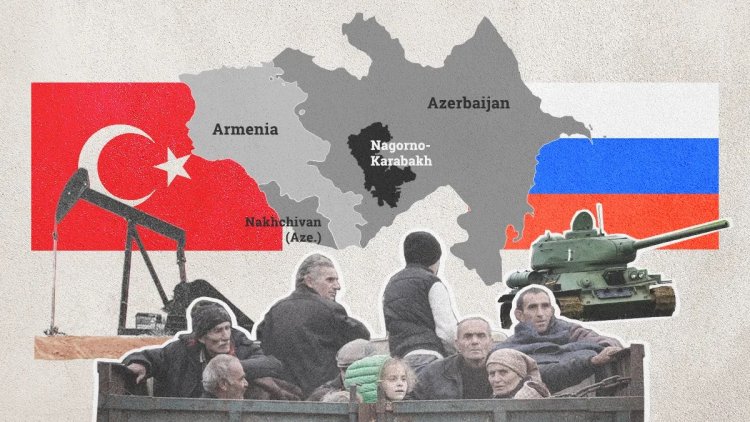
Analysis
By Shivani Pandey
After decades of armed clashes, thousands of deaths, and millions of displaced populations, Armenia and Azerbaijan are finally moving towards a resolution of the Nagorno-Karabakh conflict and establishing enduring stability in the region.
What is Nagorno-Karabakh?
Nagorno-Karabakh is a disputed territory located in the mountainous South Caucasus region between the Black Sea and the Caspian Sea. It has been a bone of contention between the former Soviet republics of Armenia and Azerbaijan for over three decades. Internationally, it is recognised as a part of Azerbaijan. However, it consists predominantly of people of Armenian ethnicity. Nagorno-Karabakh has a majority Armenian-Christian population, while Azerbaijan has a largely Shia-majority demography.
The Minsk Group
The Minsk Group was created in 1992 under the Organization for Security and Cooperation in Europe (OSCE) to establish peace and find a solution to the Nagorno-Karabakh conflict. It is co-chaired by France, the Russian Federation, and the United States. The activities taken in its pursuit have been recognised as the Minsk Process. They organize negotiations, dialogues, and peace talks between the stakeholders. In the past, they have successfully brokered ceasefires; however, a permanent solution to the territorial dispute remains unattainable.
History
1923: The Soviet Union established the Nagorno-Karabakh Autonomous Oblast within the Azerbaijan Soviet Socialist Republic. The region was home to a 95% ethnically Armenian population.
1988: Despite being geographically located within Azerbaijan, the Nagorno-Karabakh’s regional legislature passed a resolution declaring its intention to join the Republic of Armenia.
1991 (First Nagorno-Karabakh War): With Soviet dissolution and Armenia and Azerbaijan achieving statehood, Nagorno-Karabakh officially declared independence. This led to a war between Armenia-Azerbaijan.
1993: After nearly thirty thousand causalities, Armenia had gained control of Nagorno-Karabakh. It also controlled 20 percent of Azerbaijan’s geographic area.
1994: Russia brokered Bishkek Protocol was signed., Nagorno-Karabakh would remain de facto independent, with a self-proclaimed government in Stepanakert, but had close economic, political, and military ties with Armenia.
2007 Madrid Principles: It was proposed to give control of seven Karabakh districts to Azerbaijan with a corridor to link with Armenia, an opportunity for refugees to return, and setting up of a peacekeeping operation. The proposals for rejected.
2016: Armed clashes between Armenia and Azerbaijan. After four days of fighting, both sides agreed to a ceasefire. However, due to the breakdown of talks, tensions remained high with both sides accusing the other of ceasefire violations.
2020 (Second Nagorno-Karabakh War): Series of cross-border attacks leading to more than seven thousand causalities. Russia successfully brokered a deal. Azerbaijan successfully reoccupied its lost territories.
2022: Azeri activists occupied the Lachin Corridor to protest against the illegal mining in Nagorno-Karabakh and the subsequent environmental degradation caused by it. The protesters were reported to have state support.
2023: In April of 2023, Azeri government opened a checkpoint to deter military shipments from Armenia to Nagorno-Karabakh, thereby isolating the region from Armenia.
Azerbaijan Gains Control of Nagorno-Karabakh
Even after the 2020 ceasefire, Azerbaijan continued its efforts to recapture and increase its control over the Nagorno-Karabakh region. Turkey remained a key ally and supported Azerbaijan’s efforts. While Russia, an ally of Armenia and the custodian of peace in the region, was preoccupied with its Ukraine conflict and left Armenia vulnerable to the Azeri onslaught.
In September 2023, with anti-terror operations as a pretext, Azeri troops launched an attack on Armenian rebel positions in Nagorno-Karabakh. They demanded the separatist forces in Nagorno-Karabakh surrender, thus regaining entire control of the region. According to Armenian Deputy Prime Minister Tigran Khachatryan, by September 26, 2023, approximately 19,000 forcibly displaced people had entered Armenia from Nagorno-Karabakh. Others still in the enclave and in Azerbaijan are facing a threat of “ethnic cleansing” unless measures for protection are undertaken.
Later, on October 5, 2023, US Secretary of State Antony Blinken, during a press conference at the National Palace in Mexico City, warned about the possibility of Azerbaijan launching an attack and invasion into the state of Armenia. Moreover, the separatist government in Nagorno-Karabakh, or the Republic of Artsakh, was ordered to dismantle all state institutions by the end of the year. In a decree signed by the region’s President, Samvel Shakhramanyan, it was announced that Nagorno-Karabakh will cease to exist as a separate state on January 1, 2024.
Towards Peace
On December 8, after over three months of clashes, Armenia and Azerbaijan agreed to normalize diplomatic relations and exchange prisoners of war. In a landmark joint statement, the leadership from both sides stated that they hoped to finally create lasting stability in the region and sign a peace treaty before the end of the year. As a rebuilding of confidence between two countries, Armenia withdrew its own candidacy and backed Azerbaijan’s bid to host the 29th Session of the Conference of Parties (COP29) to the UN Framework Convention on Climate Change. In reciprocation of good faith, Azerbaijan will support the Armenian candidature for Eastern European Group COP Bureau membership.
In a surprising turn of events, the agreement to establish peace and stability was brokered without third-party involvement. Despite the speculations of US involvement in behind-the-scenes mediations, big-power politics remained absent in the negotiations, given the preoccupation with the Russia-Ukraine conflict and the Israel-Hamas war. This is simply an indication of the declining importance of the erstwhile Western powers in contemporary geopolitical affairs. It also exposes the inability of international organizations to create concrete solutions to regional conflicts. While the measures are a step in the right direction, the actual materialization of the peace treaties and their implementation will be the real litmus test.
Other Developments
In October 2023, the Armenian government announced the launch of its “Crossroads for Peace” initiative which shall focus on building connections between Armenian and its neighbours–Georgia, Iran, Turkey, Russia, and most notably, Azerbaijan. Given the limited infrastructural development and regional connectivity in the South Caucasus region, the developments undertaken are highly welcomed by other stakeholders. The peace between Armenia and Azerbaijan will lead to similar economic initiatives with consensus among nations, which hitherto were undertaken unilaterally by nations involved, such as the Azerbaijan proposed Zangezur corridor that connected it to both Nakhchivan and Turkey through southern Armenia however, lacked a political understanding with Yerevan.
Geopolitically and strategically, the peace efforts are accompanied by a strong criticism of Russia by Armenia, its erstwhile longstanding regional ally. It exposed the nonreliability of the Moscow-led Collective Security Treaty Organization (CSTO), as it failed to solidify Armenian defences in the face of attack from Baku. The Armenian ratification of the Rome Statute, making it a party to the International Criminal Court further exposes this divide, as it means that if Vladimir Putin visits Armenia, he can be arrested, given the arrest warrant issued against him by the ICC in March 2023.
Conclusion
Even as we move towards peace, the thousands of atrocities and casualties that lie buried cannot be discounted. But if respective stakeholders succeed in negotiating and signing a peace accord, exhibit mutual respect for sovereignty and non-interference, follow international humanitarian laws, provide opportunities for migration and rehabilitation of populations displaced, and create a mutually beneficial bilateral relationship, then the peace between Armenia and Azerbaijan can be exemplified as a model of peace and stability in interstate conflicts. For now, much remains to be achieved.
Disclaimer: This paper is the author's individual scholastic contribution and does not necessarily reflect the organization's viewpoint.


